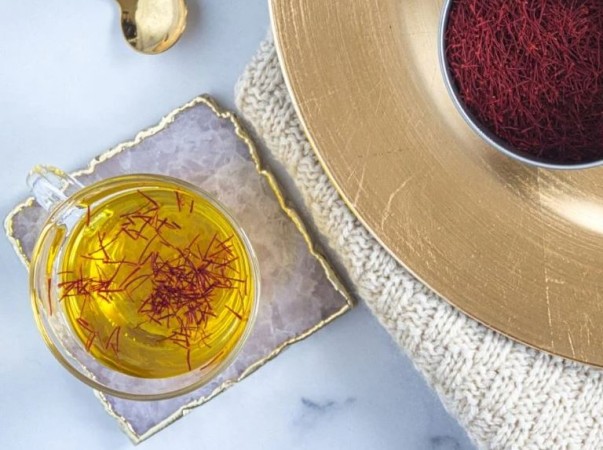
Saffron, often referred to as the "golden spice," has been cherished for its rich color, exquisite flavor, and numerous health benefits for centuries. From ancient times to modern science, saffron has been a subject of fascination due to its potential to enhance eyesight and alleviate discomfort during periods. One popular way to harness its benefits is by brewing saffron tea. In this article, we delve into the intriguing connection between saffron tea and its reported effects on vision enhancement and period pain relief, while providing a simple guide on how to prepare this delightful elixir.
Saffron's Nutritional Profile
Saffron is derived from the stigma of the Crocus sativus flower and is known for its vibrant red-orange color and distinctive flavor. Beyond its culinary uses, saffron contains an array of compounds that contribute to its potential health benefits. Some of these compounds include crocin, crocetin, safranal, and antioxidants. Crocin and crocetin, in particular, are believed to have a positive impact on eyesight and may play a role in reducing inflammation and oxidative stress in the body.
Enhancing Eyesight: Myth or Reality?
Throughout history, saffron has been associated with enhancing eyesight. Ancient civilizations, including the Greeks and Persians, believed in its potential to improve vision. While the claim might sound fantastical, modern scientific research has provided some support to this notion. Crocin, a key component of saffron, is thought to protect retinal cells from damage caused by oxidative stress and inflammation. Some studies suggest that saffron supplementation might be beneficial for age-related macular degeneration and improving visual acuity, particularly in those with early-stage conditions.
Period Pain Relief: A Welcome Relief
For many women, menstrual discomfort can be an unwelcome monthly experience. Research has explored various natural remedies to alleviate period pain, and saffron tea has emerged as a potential contender. Saffron's anti-inflammatory properties, attributed to compounds like crocetin and safranal, could contribute to pain relief during menstruation. These compounds might help relax uterine muscles, thus easing cramps and reducing overall discomfort.
Making Saffron Tea: A Step-by-Step Guide
Preparing saffron tea is a straightforward process that allows you to enjoy the potential benefits of this ancient spice. Here's a simple guide to making saffron tea:
Ingredients:
1 teaspoon of saffron threads
2 cups of water
Honey or sweetener (optional)
Lemon or orange zest (optional)
Cinnamon stick (optional)
Instructions:
Boil the Water: In a small pot, bring 2 cups of water to a gentle boil. Use filtered water to ensure the best flavor.
Add Saffron Threads: Once the water is boiling, add 1 teaspoon of saffron threads to the pot. Allow the saffron to steep in the hot water for about 10-15 minutes.
Optional Flavor Additions: For added flavor, consider including a cinnamon stick, lemon or orange zest, or a touch of honey or sweetener to taste. These additions can enhance the overall taste of the tea while complementing saffron's unique flavor.
Strain and Serve: After steeping, use a fine mesh strainer to strain the saffron tea into cups. Discard the saffron threads. You can enjoy the tea hot or let it cool down and serve it over ice.
Saffron, the golden spice, has captured human fascination for centuries due to its vivid color, distinct taste, and potential health benefits. While historical claims about its ability to enhance eyesight and alleviate period pain have persisted through time, modern scientific research has provided some validation to these notions. The compounds found in saffron, such as crocin and crocetin, are believed to contribute to these potential benefits. Saffron tea, a delightful and aromatic beverage, offers a convenient way to incorporate this spice into your daily routine.
As with any natural remedy, it's important to approach saffron tea consumption with a balanced perspective. While saffron may offer potential benefits, it's not a magical solution and should be considered as part of a holistic approach to health. If you're considering incorporating saffron tea into your routine, it's advisable to consult with a healthcare professional, especially if you have any pre-existing health conditions or are taking medications.
In conclusion, the allure of saffron goes beyond its culinary applications, extending to potential health benefits that have intrigued generations. Savor the richness of saffron tea while being mindful of its potential contributions to eyesight enhancement and period pain relief.
Explore these Simple Stretches for Effective Back Pain Prevention
Pistachio Power: Creative Brunch Ideas to Impress Your Guests
Eating Well Made Easy: Try Our Delectable Chef's Special Salad